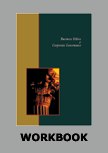Sustainability Management at Philips
|
|
ICMR HOME | Case Studies Collection
Case Details:
Case Code : BECG051
Case Length : 25 Pages
Period : 1995-2005
Pub. Date : 2005
Teaching Note :Not Available
Organization : Philips
Industry : Consumer Electronics
Countries : Netherlands
To download Sustainability Management at Philips case study (Case Code:
BECG051) click on the button below, and select the case from the list of available cases:

OR

Buy With PayPal
|
Price:
For delivery in electronic format: Rs. 400 ;
For delivery through Shipping & Handling Charges extra: Rs. 400 +Shipping & Handling Charges extra
»
Business Ethics Case Studies
» Case Studies Collection
» ICMR Home
» Short Case Studies
» View Detailed Pricing Info
» How To Order This Case
» Business Case Studies
» Case Studies by Area
» Case Studies by Industry
» Case Studies by Company
Please note:
This case study was compiled from published sources, and is intended to be used as a basis for class discussion. It is not intended to illustrate either effective or ineffective handling of a management situation. Nor is it a primary information source.
Chat with us

Please leave your feedback

|
|




<< Previous
Introduction Contd...
Barbara Kux (Kux), chairperson of Philips' Sustainability Board, said, "Sustainability is about growth. It is usually defined as meeting the needs of the present generation without compromising the ability of future generations to meet theirs. By empowering future generations to meet their needs, we also open up a world of opportunities for the company."5
Background Note
|
Philips & Company (Philips) was founded in 1891 by Gerard Philips (Gerard) who established a facility at Eindhoven, the Netherlands, to produce incandescent electric lamps. Gerard's younger brother, Anton, joined the business in 1895 as a salesperson and helped the company become one of the largest producers and marketers of carbon-filament lamps by the early 1900s.
Right from the beginning, Philips laid strong emphasis on research. In 1914, all its research efforts were consolidated and brought under one organization, called Philips Research Laboratories. In the 1920s, Philips began mass production of consumer goods and as a result, decided to diversify its product range.
|

|
X-ray radiation and radio reception were focus areas for Philips and the company's innovations in these areas were protected through patents. The company introduced medical X-ray tubes in 1918. In the 1920s, Philips also began manufacturing vacuum tubes.
|
|
It began experimenting with television in 1925; radio production began in 1927 and more than one million pieces were sold by 1932. The 100 millionth radio valve was produced in 1933. The same year also saw Philips opening production facilities for X-ray equipment in the US. The Great Depression6 of the 1930s that followed the stock market crash of 1929 had a negative impact on Philips' business. In the mid-1930s, Philips was in search of ideas that could be converted into saleable products. An executive who was sent to the US in 1937 came up with the idea of manufacturing electric shavers. Philips began manufacturing electric shavers in 1939. The same year it launched sodium and mercury based lamps and sound recording equipment... |
Excerpts >>
|
|









